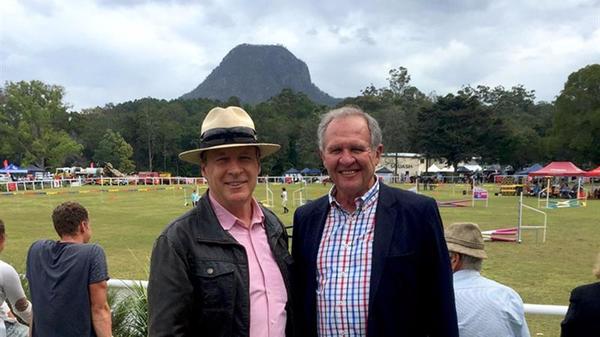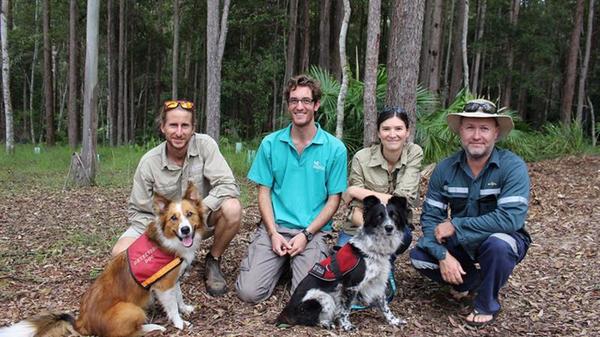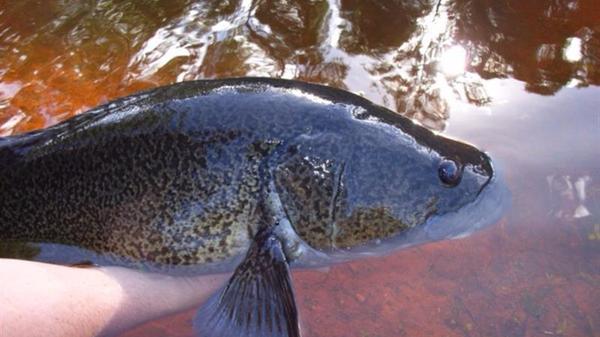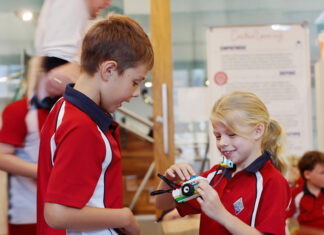By Jolene Ogle
SINCE establishing almost two years ago, the Noosa Biosphere Reserve Foundation (NBRF) has let many wonder where the $600,000 in funding has gone.
Speaking exclusively with Noosa Today, NBRF chair Campbell Corfe has shared the organisation’s vision, hopes for the future and where the $600,000 from the Environment Levy has been allocated.
The NBRF organisation has copped a lot of criticism over the past 18 months, including from now councillor Ingrid Jackson who, before the election, slammed the NBRF for a lack of transparency.
Cr Jackson said the foundation’s governance seemed “muddled” giving the appearance of being a “closed shop” and called for a review of the NBRF operations (Noosa Today 10 March).
Earlier this month, Cr Jackson said, along with other people in the community she had concerns about the operations of NBRF in March this year, but she had since learnt more about the organisation.
“When elected to council, I pursued my interest in ensuring the foundation was meeting community expectations and operating in a transparent manner,” she said.
Cr Jackson said Noosa Council had committed to a three-year funding deed with the NBRF and while no reports had been received from the foundation since it established, she believed the current committee in on track to deliver results and keep the community more informed on project progress.
Cr Jackson said the NBRF were required to supply council with an annual report, an audited financial report and a half yearly progress report, and while these hadn’t been forthcoming in the past, since becoming the chair in February this year Mr Corfe had provided a mid-year update to councillors and was due to present to council again, later this month.
The new biosphere management structure was introduced by Noosa Council in 2014 after community consultation and replaces the previous council-owned structure with a more community-based operation with a board of volunteers.
Unlike the Noosa Community Biosphere Association, which is also volunteer-based but carry out grassroots activism, the NBRF is a long-term, research-based foundation.
“Noosa can be a living laboratory. We want to show the world what a soft footprint looks like,” he said.
“But we don’t take all the credit at NBRF. Through funding, we are simply the magnet that pulls together the filings. It’s the wide range of community groups who are doing all the great work. We say we are simply standing on the shoulders of the great groups before us.”
Mr Corfe said the new management structure of the NBRF meant they could receive funding from council and now, with Direct Gift Recipient (DGR) status, the foundation could receive donations and large-scale funding.
“We look at long-term, financially significant projects that are deeply fundamental and beyond the politics of the day,” Mr Corfe said.
A range of projects are already underway, all of which tie together in one way or another. For example, the Keep it in Kin Kin project is a research study to find out how landowners can better manage waterways and land in Kin Kin to keep silt and soil out of the rivers and creeks that make their way to Noosa River.
“This project has been underway for six months and already we’re seeing some great results,” Mr Corfe said.
The Bring Back the Fish program is influenced by the effectiveness of the Keep it in Kin Kin project, but also aims to establish “fish hotels” in the Noosa River to help rejuvenate the native oyster population that was once booming in the region.
This work is based on a Noosa Council and Thomas Foundation jointly funded study by University of Queensland’s Dr Ruth Thurstan that found the oyster industry collapsed around 80 years ago, painting a picture of deterioration of the river’s aquatic biodiversity and reinforcing the value of an oyster reef rehabilitation trial.
Following the release of the study findings, the Thomas Foundation, Noosa Parks Association and the University of the Sunshine Coast sought funding from the NBRF to establish oyster reefs in Lake Weyba and Noosa River.
Council supports the trial after partly funding a study confirming the river is still spawning sufficient juvenile oysters to re-establish oyster beds.
Mr Corfe said the majority of the $600,000 in funding received had been allocated to projects such as the Bring Back the Fish project, and this is a perfect example of how the NBRF has brought together groups to create long-term projects that will help the local environment.
“Bring Back the Fish won’t take six months or a year, it will be two years or three,” he said. “And then, once we get the fish back, we move on to learn how we can keep them and help them thrive.”
When asked how the NBRF plan to fund projects that will operate past their three-year funding deed with council, Mr Corfe said the foundation would seek to renew funding with Noosa Council, but would also seek big-business funding.
“We can move to external funding and seek expert help from organisations like the World Wide Fund for Nature (WWF),” he said.
The NBRF now has a website with details on current projects as well as the funds allocated to the research and information on project collaborators; www.noosabiosphere.org.au.
Mr Corfe acknowledged communication with the community needs to improve and said he hoped in the future the NBRF would become a much-loved part of the Noosa Biosphere management.
Cr Jackson said after her research into the foundation, she was now keen to see the progress of the NBRF.
“I am very keen to see the NBRF continue to encourage a sustainable shire, combining environmental, economic and community values,” she said.
“We too are keen to see the progress of the NBRF projects that aim to help rejuvenate and re-establish the Noosa environment as a healthy, diverse and thriving locale. We will continue to bring updates to our readers as they happen.









